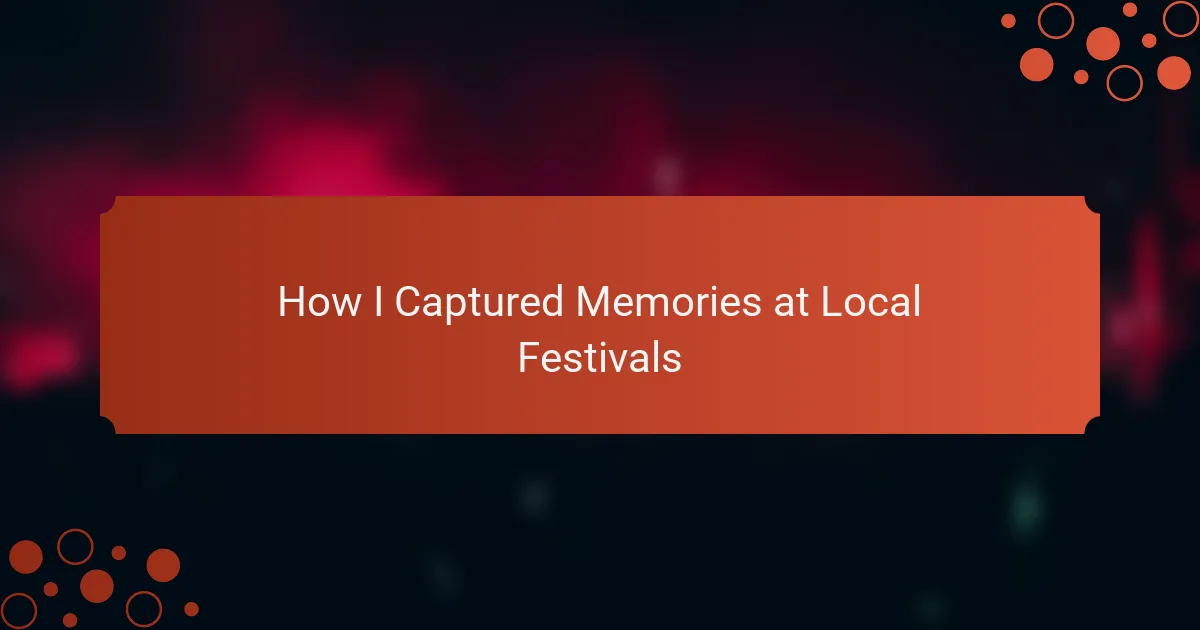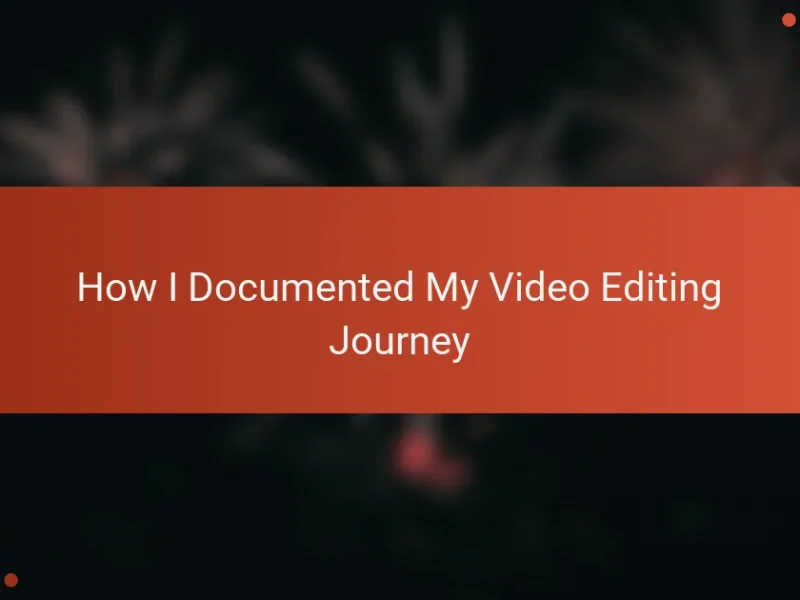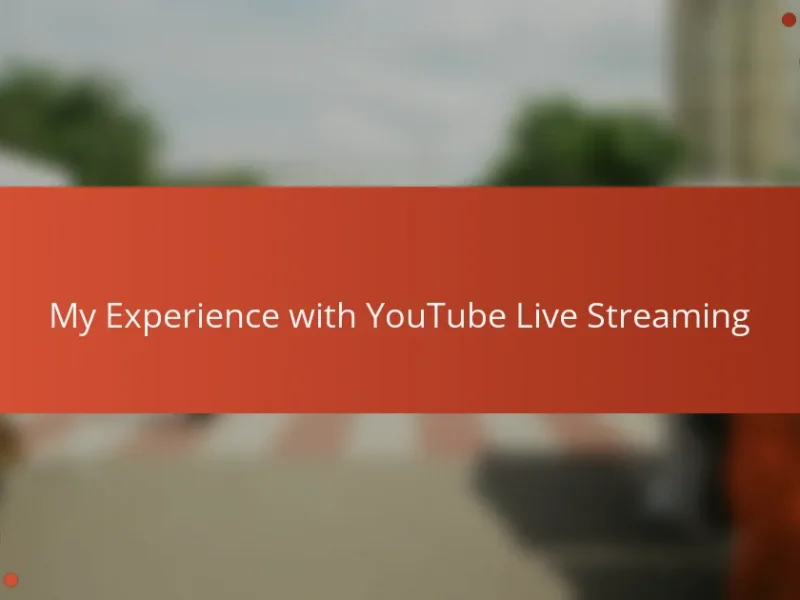Key takeaways
- Video contests encourage creative storytelling by providing themes and rules that challenge creators.
- Festival videography benefits from capturing candid moments, using proper lighting and sound, and framing shots thoughtfully.
- Essential equipment, including good cameras and microphones, enhances the quality of festival recordings and storytelling.
- Edit videos with purpose, focusing on clear cuts, simple transitions, and balanced audio to strengthen viewers’ emotional engagement.
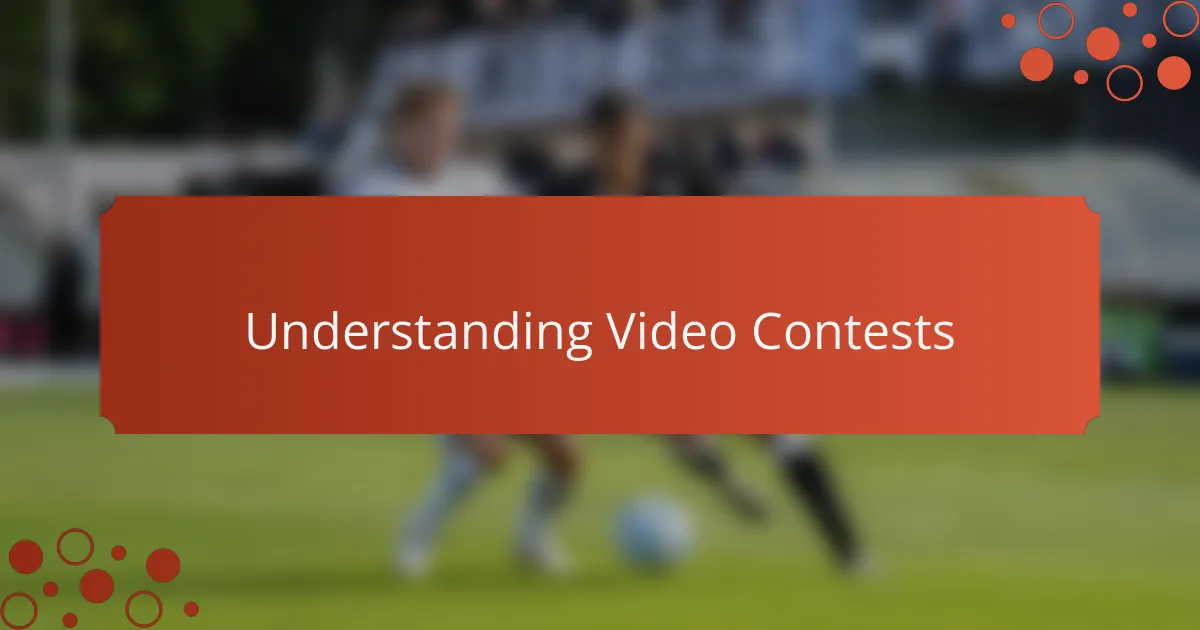
Understanding Video Contests
Video contests have a unique way of bringing stories to life. From my experience, they challenge you to not just record moments but to tell a story that resonates. Have you ever felt the rush of capturing the perfect shot, knowing it could be judged and shared widely?
What makes these contests interesting is the variety of themes and rules, pushing creators to think creatively within constraints. I remember once entering a festival video contest where the time limit forced me to be selective and focused, which actually improved the quality of my storytelling.
At their core, video contests are about connection—connecting with an audience, with a theme, and sometimes even with yourself as a creator. This emotional aspect often drives me to put more heart into my videos than I initially expect.
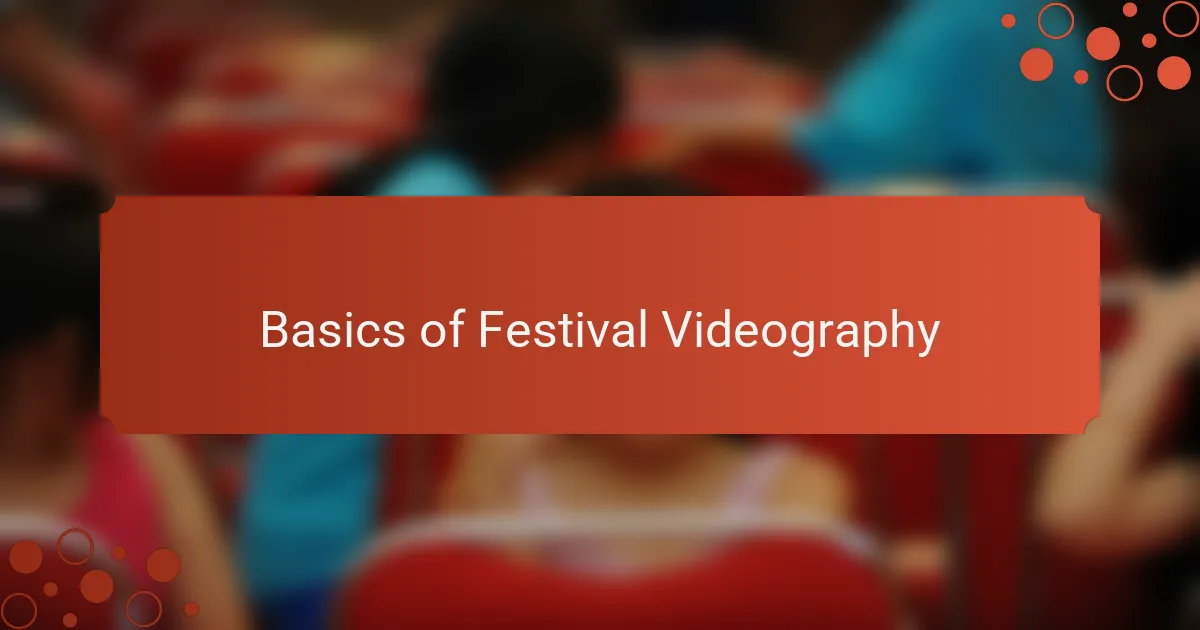
Basics of Festival Videography
Festival videography, to me, starts with truly immersing yourself in the event’s atmosphere. I’ve found that capturing candid moments—the laughter of children, the vibrant dance moves, or the spontaneous street performances—brings a raw energy to footage that scripted shots just can’t match. Have you ever noticed how the genuine expressions of people tell the most compelling stories?
Lighting and sound make a huge difference, too. Early in my festival filming days, I struggled with harsh midday sun washing out colors and noisy crowds overpowering audio. Over time, I learned to anticipate these challenges—like shooting during golden hour for softer light or using directional microphones to filter out background noise. These small adjustments elevate the quality, making your video feel more polished without losing authenticity.
And framing—oh, the magic of framing! I often catch myself moving around, looking for the perfect angle that highlights both the subject and the lively surroundings. It’s like painting a picture where every element matters. Don’t you find that a well-composed shot pulls viewers right into the heart of the celebration, almost like they’re there with you? These basics have shaped how I approach every festival shoot, turning simple clips into memorable stories.
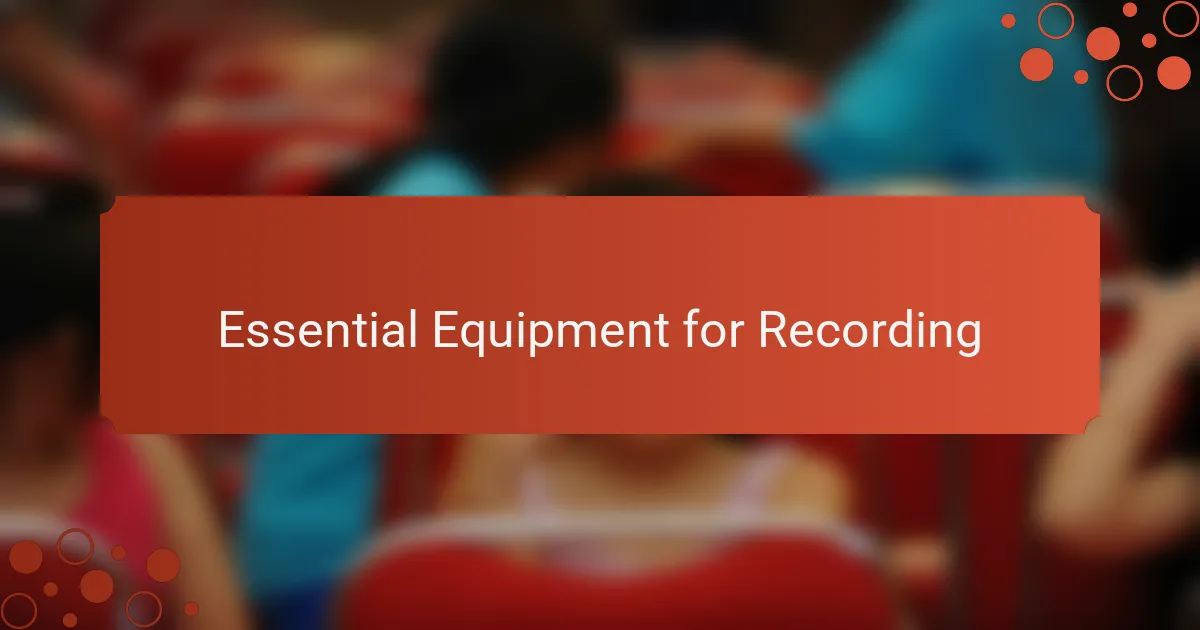
Essential Equipment for Recording
Choosing the right gear was a game-changer for me when I first started recording at festivals. I quickly realized that a reliable camera with good low-light performance was essential, especially as the sun set and the colors of the celebrations deepened. Have you ever tried capturing a firework or a torchlight procession with a camera that just can’t adjust? It’s frustrating, and that pushed me to upgrade my equipment early on.
Tripods and gimbals became my best friends afterward. Holding a camera steady for long periods, especially while moving through bustling crowds, was tiring and often resulted in shaky footage. Investing in a gimbal helped me get those smooth, cinematic shots that truly reflect the festival’s vibrant energy without distracting jitters. From my experience, these tools aren’t just accessories—they’re vital extensions of your storytelling.
Sound gear doesn’t always get the spotlight, but trust me, it should. Early on, I used my camera’s built-in mic and ended up with audio cluttered by endless background noise. Picking up a directional microphone made all the difference, capturing crisp voices and subtle festival sounds that drew viewers right into the moment with me. Have you noticed how much clearer a story feels when you can actually hear the laughter or music perfectly? That’s the kind of immersion I aim for every time.
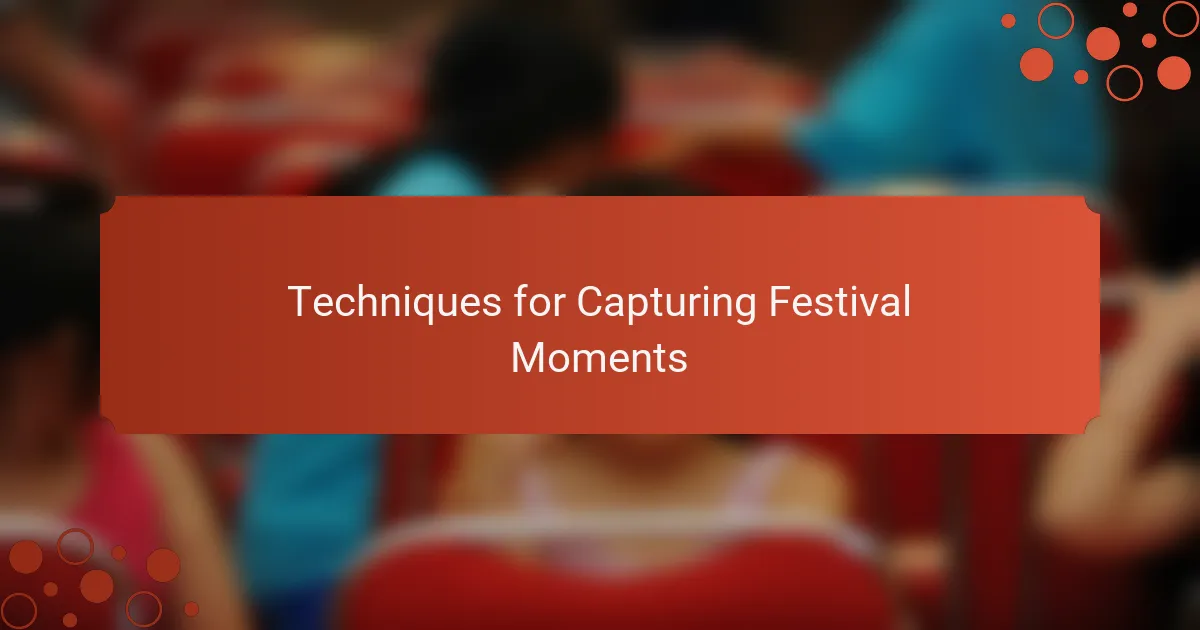
Techniques for Capturing Festival Moments
One technique I rely on is the art of anticipation—watching the flow of the festival to predict moments before they happen. For example, during a local dance, I spotted a performer about to leap, so I framed the shot just in time to catch that breathtaking jump. Have you ever waited patiently, camera ready, to capture a fleeting expression or action? It’s that split second that turns ordinary footage into something unforgettable.
I also lean heavily on the power of close-ups. Getting up close to candid faces or intricate festival decorations brings an intimacy that wide shots often miss. I remember a time when capturing the beads of sweat on a drummer’s temple made the energy and effort of the performance so tangible—I felt like the viewers could almost hear the heartbeat of the festival through that shot.
Another approach that’s become a game-changer for me is mixing slow-motion with real-time footage. Slowing down fireworks or dancers’ spins adds drama and lets the audience savor the moment, while cutting back to faster-paced scenes keeps the excitement alive. Does this combination help you feel the rhythm of the festival? For me, it’s like giving the story breathing room, balancing intensity with celebration.
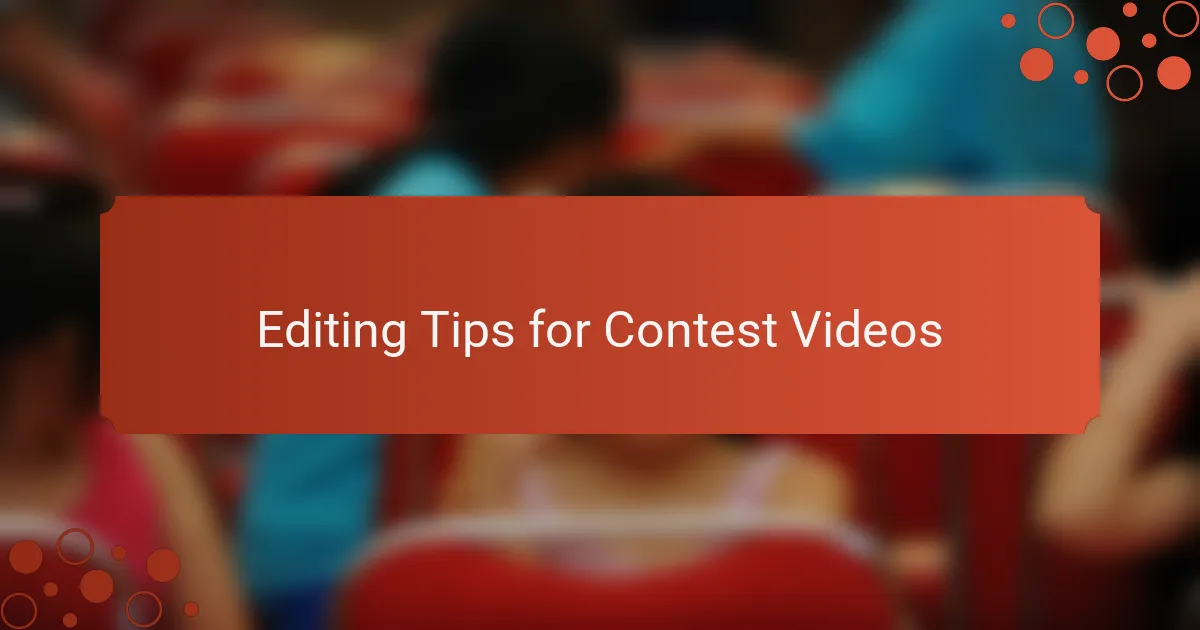
Editing Tips for Contest Videos
Editing contest videos taught me that every cut must serve a purpose. I remember sweating over one submission where trimming just a few seconds made the story so much clearer and tighter. Have you ever noticed how a well-placed cut can turn a collection of clips into a seamless journey that keeps viewers hooked?
Transitions are another subtle yet powerful tool. Early on, I used flashy effects thinking they’d impress judges, but they distracted from the story instead. Over time, I stick to simple fades or quick cuts, letting the footage speak for itself. It’s amazing how understated moves often feel more professional and heartfelt.
Finally, sound editing deserves extra attention. Once, cleaning up background noise and balancing music with dialogue transformed my video’s emotional impact completely. Don’t underestimate how clear audio draws viewers deeper into the moment—it’s as important as the visuals in telling your festival story.
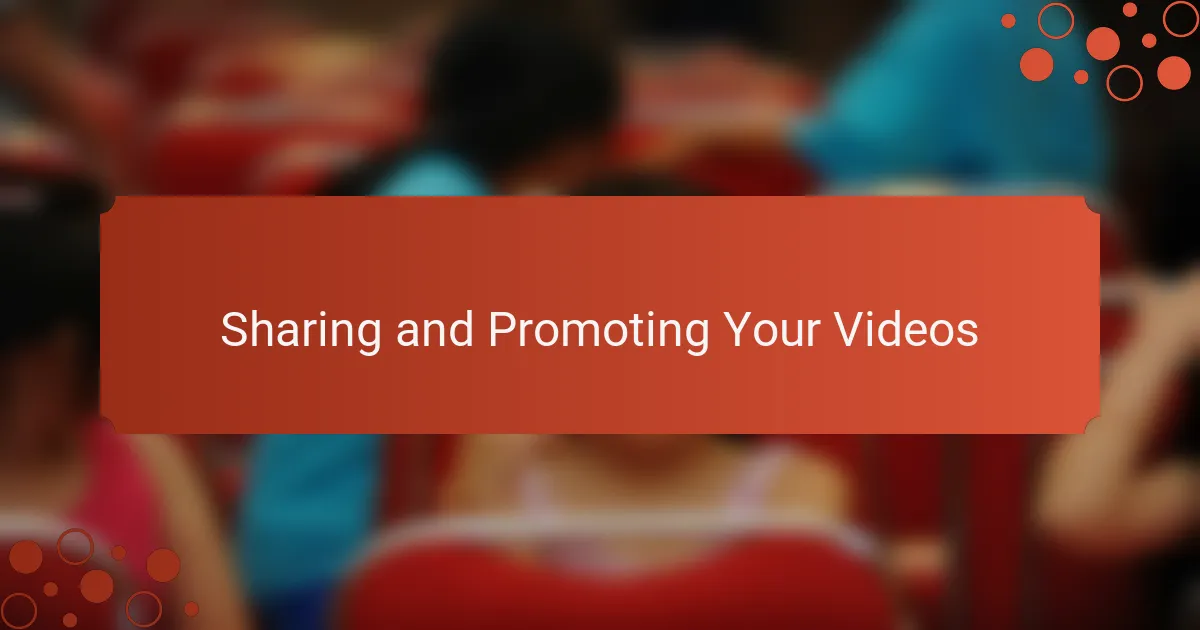
Sharing and Promoting Your Videos
Sharing your festival videos is where the magic of connection really begins. I’ve noticed that uploading to multiple platforms—like YouTube, Instagram, and Facebook—expands your reach, but tailoring your captions and hashtags to each audience can make all the difference. Have you ever wondered why some videos go viral while others barely get views? It often boils down to how you present and promote them after filming.
From my experience, engaging with viewers by responding to comments and asking questions helps build a dedicated following. When I shared one of my festival clips and took the time to reply thoughtfully, it sparked conversations that introduced my work to even more people. Promotion isn’t just about getting views; it’s about creating a community that appreciates your storytelling.
I’ve also dabbled in collaborating with local festival organizers and fellow creators to cross-promote videos, which gave my content a real boost. Sometimes, tagging the festival’s official page or using their event hashtags brought my videos to the attention of bigger audiences and even contest judges. Have you tried leveraging those connections? It’s amazing how a little networking can turn your personal memories into widely celebrated stories.
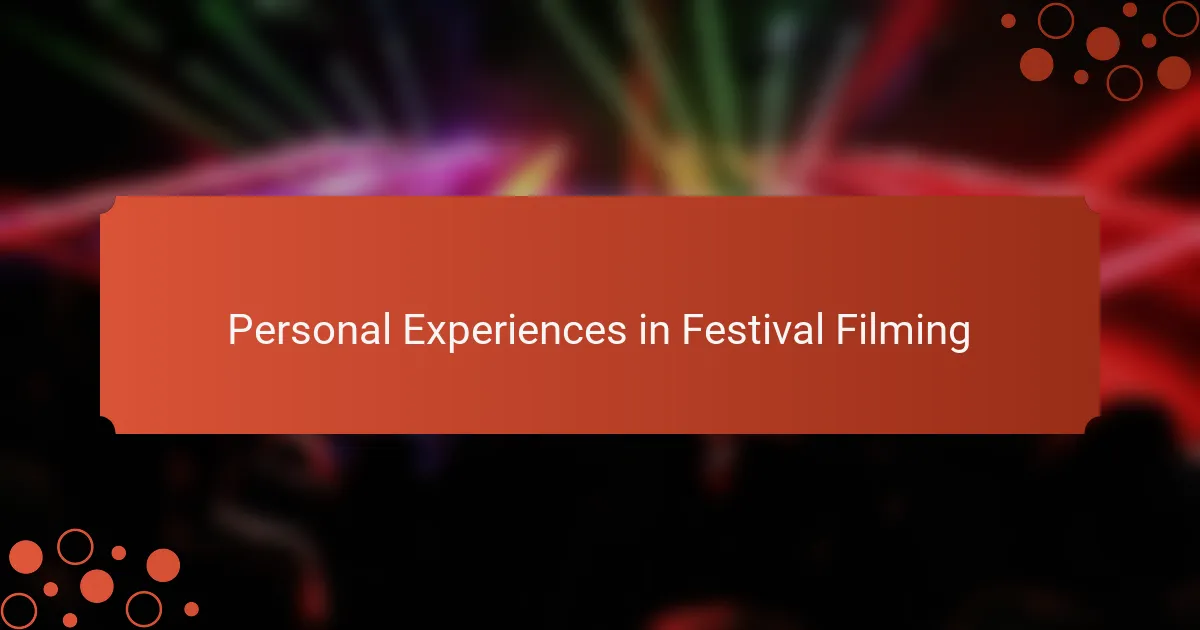
Personal Experiences in Festival Filming
Filming at local festivals has always been a deeply personal journey for me. I recall one vibrant summer fair where I got so caught up in the excitement that I almost missed capturing a traditional dance’s final, dramatic pose. Have you ever had those moments when your adrenaline kicks in just as the perfect shot unfolds? It’s those split seconds that make festival filming both thrilling and rewarding.
Sometimes, beyond the technicalities, festival videography feels like a dance itself—moving with the crowd, anticipating emotions, and blending into the celebration. I remember feeling a genuine connection with strangers as I focused my lens on their candid smiles and spontaneous laughter. Isn’t it remarkable how filming can turn you into a silent participant, experiencing the event more intimately than most?
Of course, the unpredictable nature of festivals taught me patience and adaptability. One chilly evening, rain threatened to halt my shoot, but embracing the challenge led to capturing stunning reflections and cozy moments that added depth I hadn’t planned for. From my perspective, these unexpected twists often become the heart of the story, proving that sometimes the best memories are the unplanned ones.
